Why you can trust Tom's Hardware
The PX279 Prime comes set to its User mode, Normal Color Temp and Gamma 2.2. These settings will result in a flat and lifeless image. Fortunately, calibration can easily fix things.
Grayscale and Gamma Tracking
We describe our grayscale and gamma tests in detail here.
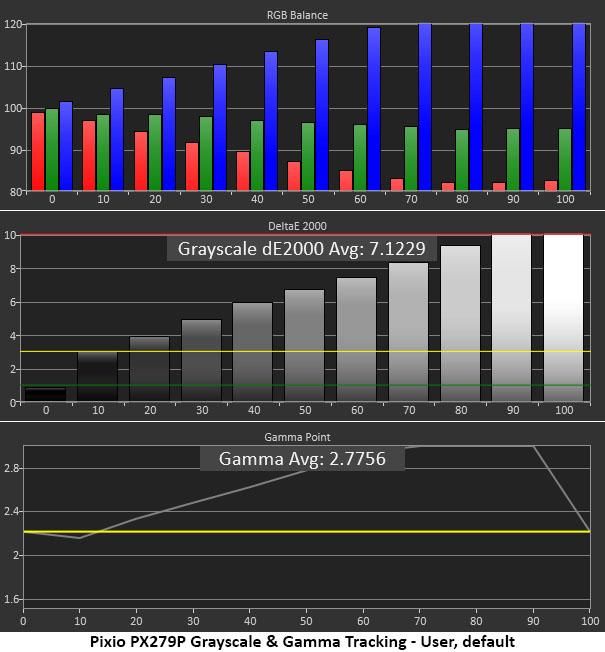
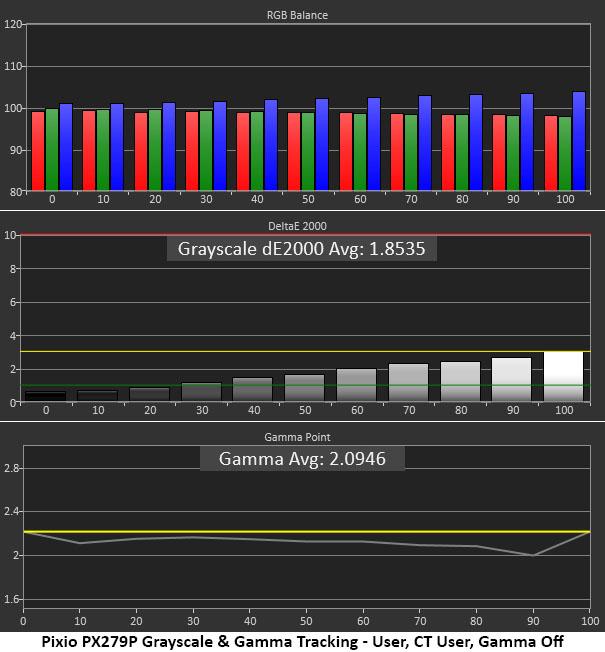
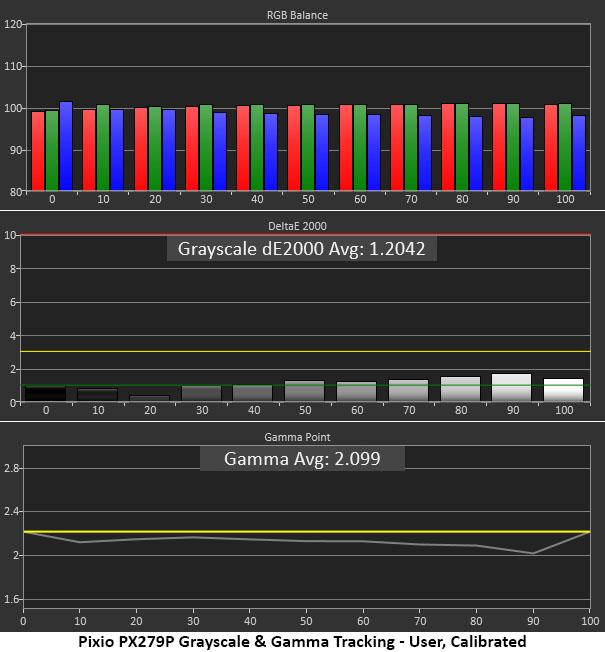
You can see what we’re talking about in the first grayscale chart. The blue tint is easy to see across the brightness range. While this increases the perception of greater light output, the image looked very two-dimensional with drab color and no punch. Gamma contributes to this with values that are much too high from 20-90% brightness.
After we simply changed Color Temp to User and Gamma to Off (second chart), the PX279 Prime greatly improved. If the monitor came this way, it would easily make our Calibration Not Required list. Grayscale tracking here shows no visible errors, and gamma, though a tad light, runs straight with a small range of values.
Lowering the Blue slider by one click (third chart) improved grayscale tracking to its lowest possible error. The PX279 Prime is capable of excellent performance; you just have to dig for it.
Comparisons
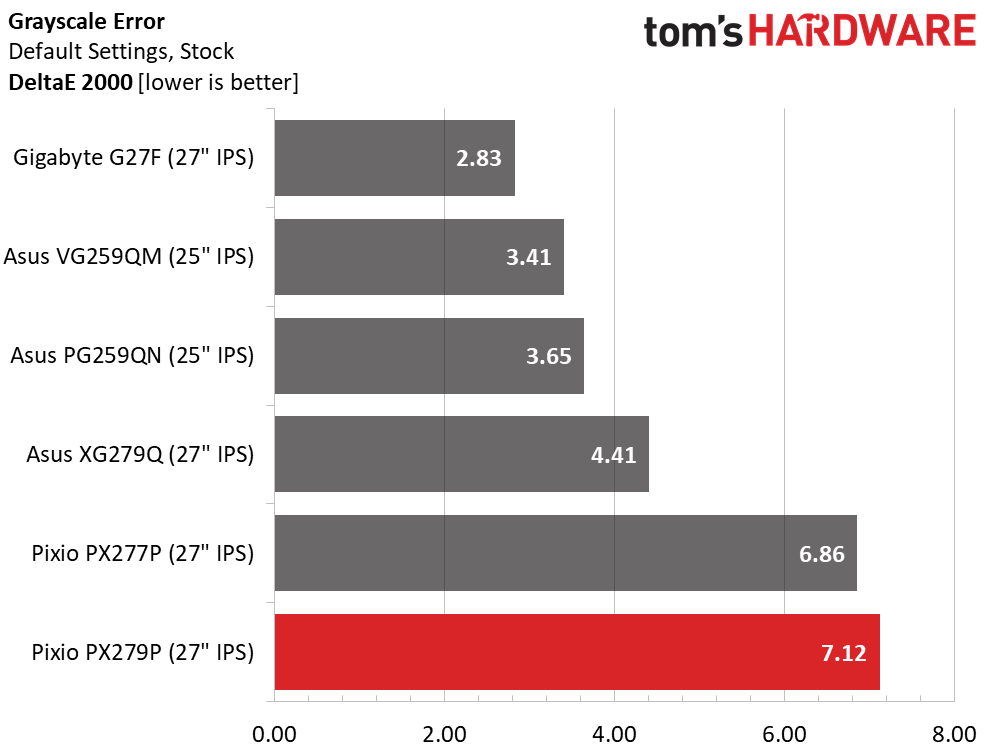
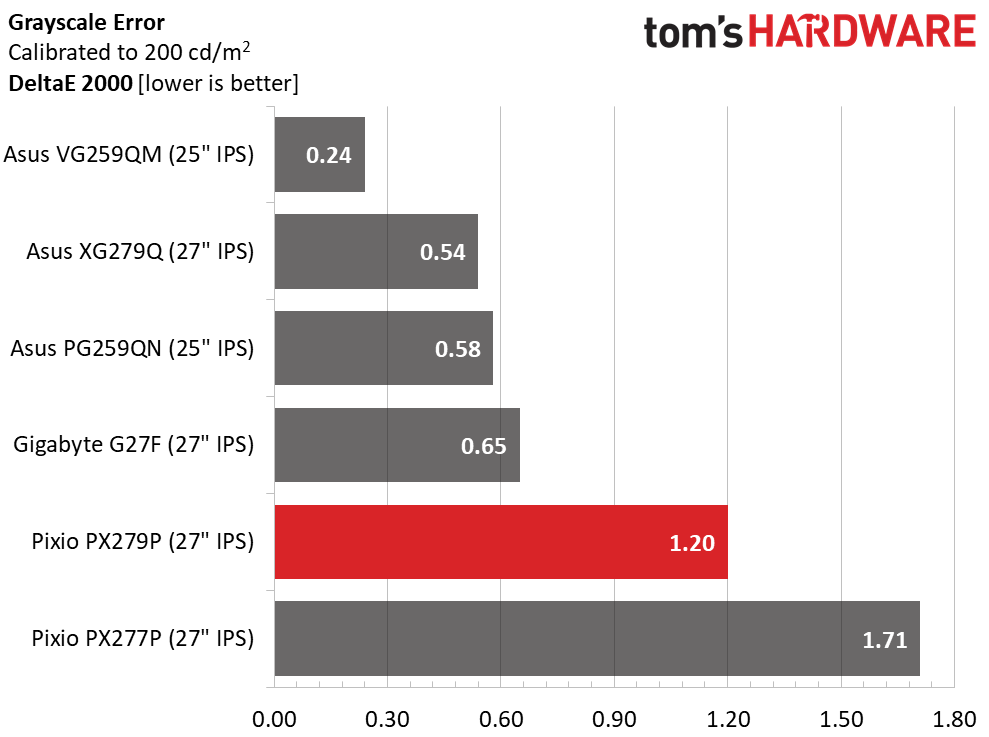
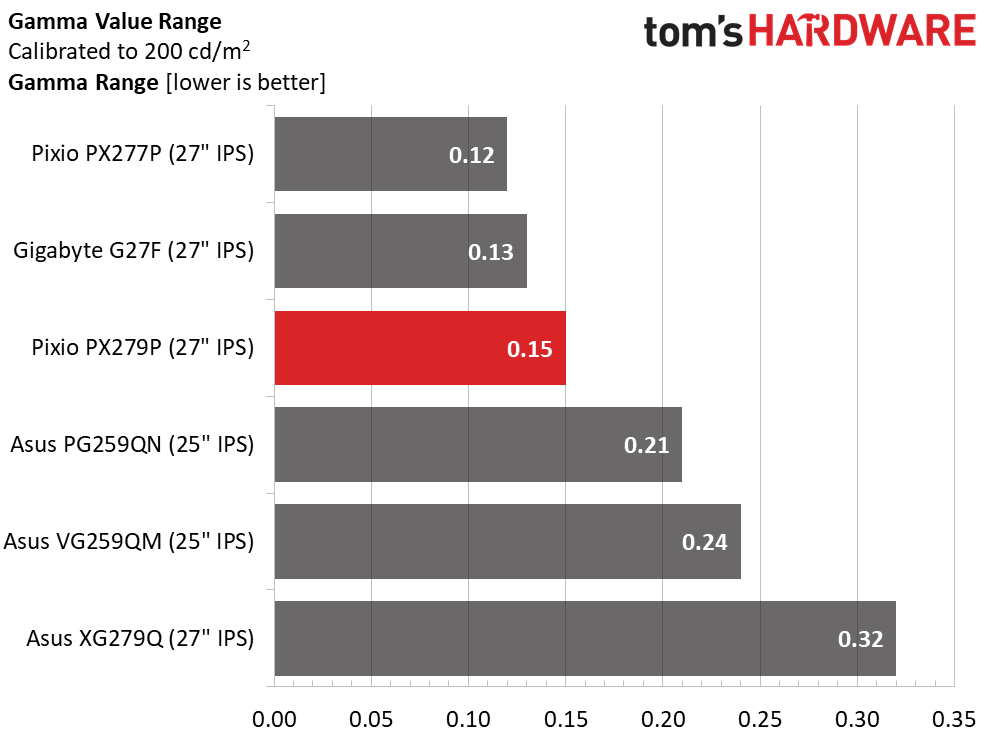
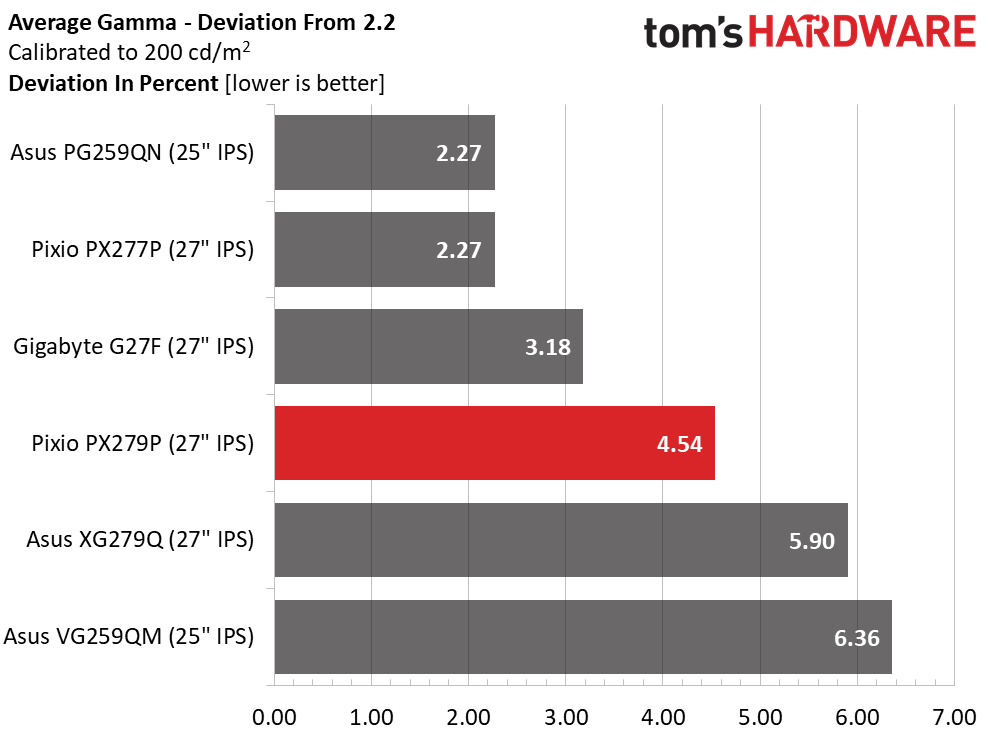
An average grayscale error of 7.12 Delta E (dE) is well below average. Pixio left some performance under the table for the PX279 Prime and its stablemate, the PX277 Prime. Just changing the PX279’s color temp and gamma presets reduced the error to 1.20dE and tightened up gamma tracking enormously. The image had far more depth as a result.
Color Gamut Accuracy
For details on our color gamut testing and volume calculations, click here.
Get Tom's Hardware's best news and in-depth reviews, straight to your inbox.


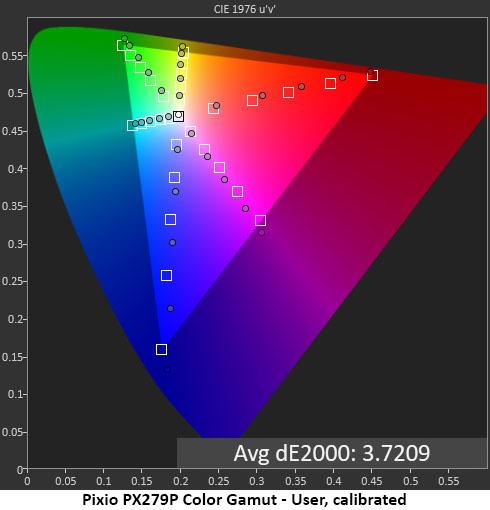
The PX279 Prime is an sRGB monitor so we measured against that standard. By default (first chart) gamut errors are higher than average with visible hue issues in cyan and magenta. Saturation points are reasonably close to their targets but, there’s definite room for improvement.
In the second and third charts, you can see the results of our color temp and gamma adjustments. Red, blue and magenta are now more saturated and closer to their hue targets. Cyan is better as well. Color is generally a bit over-saturated, but if a monitor can’t be perfectly on-spec, we expect that most would prefer more color rather than less (we certainly do).
Comparisons
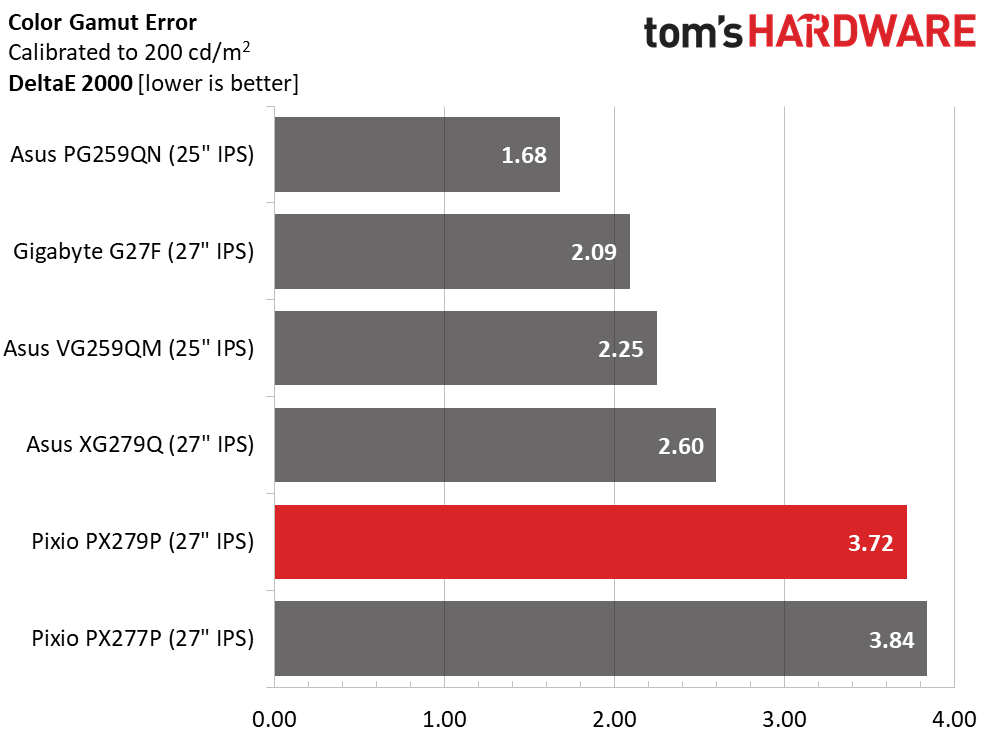
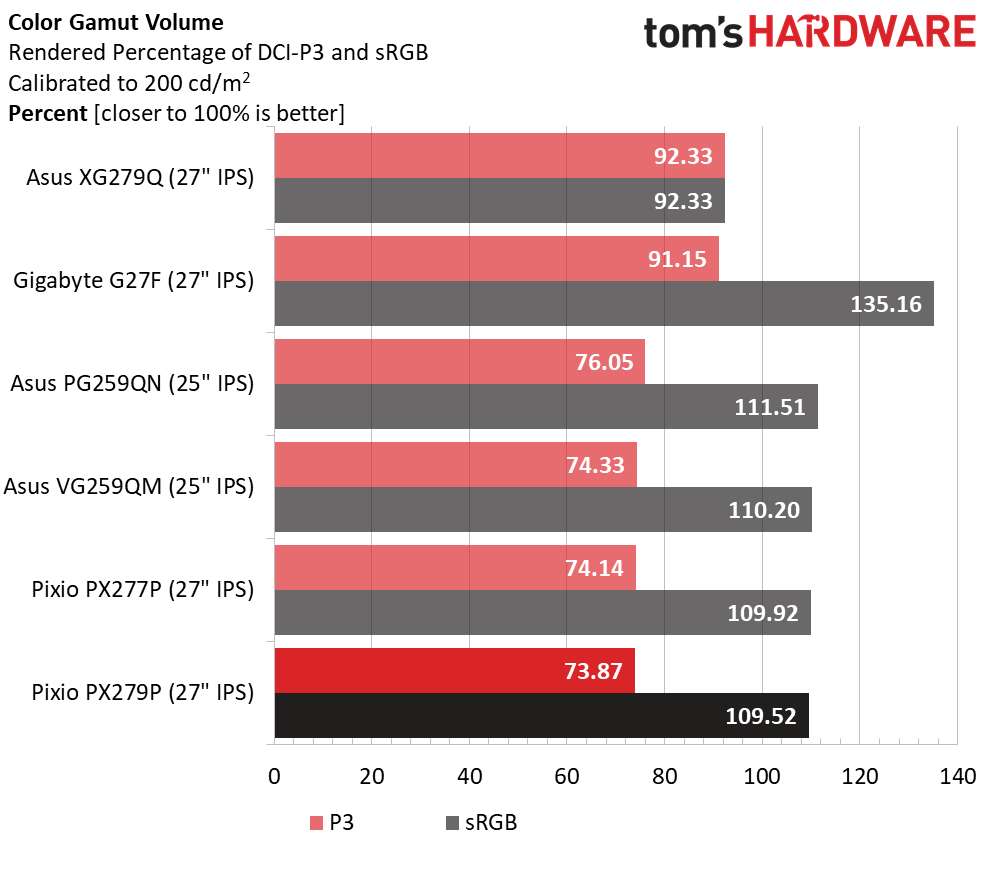
The two Pixio screens are at the bottom of our color accuracy test after calibration but only by a small margin. Since the PX279 Prime is a little over-saturated, we can forgive, as this makes up for the lack of an extended gamut.
A bit of bonus blue and green means the PX279 Prime covers almost 110% of the sRGB gamut. Pixio claims 109% coverage. You could accomplish color-critical work with a software profile. While the PX279 Prime won’t deliver the punch of a P3 monitor, it acquits itself well when compared to other sRGB panels.
Current page: Grayscale, Gamma and Color
Prev Page Brightness and Contrast Next Page HDR Performance
Christian Eberle is a Contributing Editor for Tom's Hardware US. He's a veteran reviewer of A/V equipment, specializing in monitors. Christian began his obsession with tech when he built his first PC in 1991, a 286 running DOS 3.0 at a blazing 12MHz. In 2006, he undertook training from the Imaging Science Foundation in video calibration and testing and thus started a passion for precise imaging that persists to this day. He is also a professional musician with a degree from the New England Conservatory as a classical bassoonist which he used to good effect as a performer with the West Point Army Band from 1987 to 2013. He enjoys watching movies and listening to high-end audio in his custom-built home theater and can be seen riding trails near his home on a race-ready ICE VTX recumbent trike. Christian enjoys the endless summer in Florida where he lives with his wife and Chihuahua and plays with orchestras around the state.